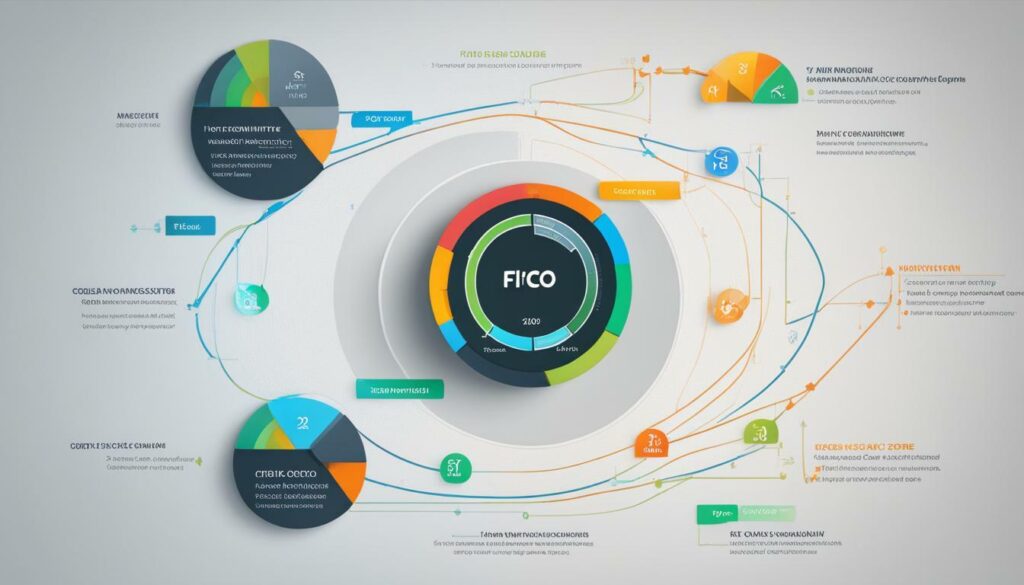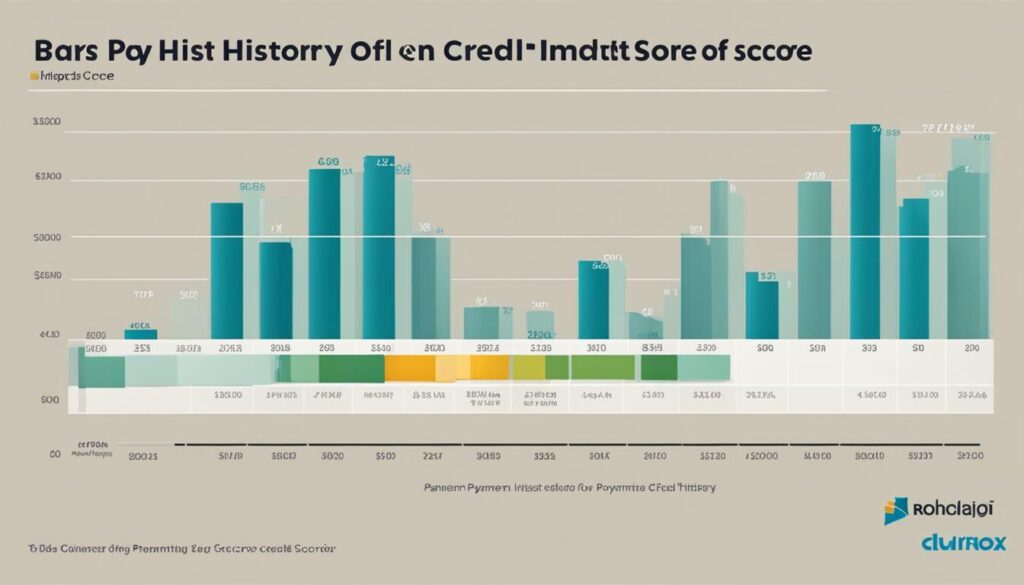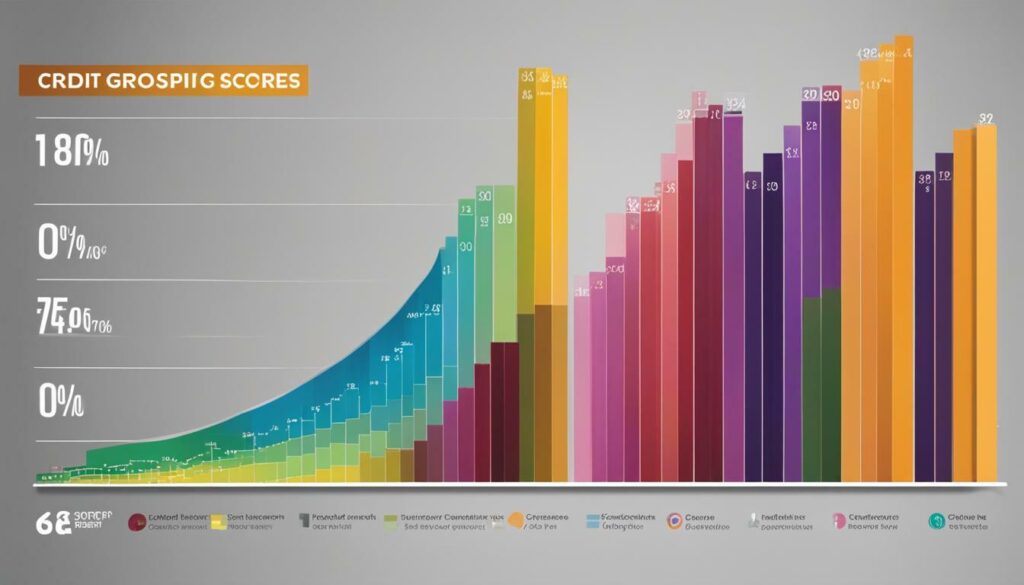Master Guide: Decoding Credit Score Algorithms for You

Welcome to our comprehensive guide on decoding credit score algorithms, where we will unravel the mystery behind these complex mathematical models that determine your creditworthiness. Understanding credit scoring algorithms is essential for managing your financial health and making informed decisions about credit. In this guide, we will explore how credit scores are calculated, the two major credit scoring methods – FICO and VantageScore, the factors that affect credit scores, strategies to improve your credit score, and the importance of monitoring your credit. Let’s dive in!
- Credit scores are calculated using algorithms that consider various factors such as payment history, credit utilization, total debt, and credit mix.
- The two major credit scoring methods are FICO and VantageScore, each with different versions and calculations.
- Payment history and credit utilization have a significant impact on credit scores, while factors like credit age, credit mix, and recent credit applications also play a role.
- Demographic characteristics do not directly influence credit scores.
- To improve your credit score, focus on paying bills on time, maintaining low credit card balances, and diversifying your credit mix.
- Monitoring your credit score regularly and freezing your credit can enhance your financial security.
How Credit Scores are Calculated
Understanding how credit scores are calculated is the first step towards taking control of your financial health. Credit scores are not arbitrary numbers; they are generated using complex algorithms developed by credit bureaus and other organizations. These algorithms analyze various factors to determine your creditworthiness and the likelihood of repaying borrowed money.
Payment history and credit utilization ratio are two key factors that heavily influence credit scores. Payment history accounts for approximately 35% of your score and reflects your track record of making timely payments. On the other hand, credit utilization ratio, which makes up about 30% of your score, measures the amount of credit you are currently using compared to your overall credit limit.
| Factor | Weight |
|---|---|
| Payment History | 35% |
| Credit Utilization Ratio | 30% |
| Total Debt | 15% |
| Credit Mix | 10% |
| Account Age | 10% |
Having a good understanding of how these factors are calculated and their relative importance can help you make informed decisions and take actions to improve your credit score.
While payment history and credit utilization are the primary factors, other elements also contribute to your credit score. Total debt, credit mix, and account age account for 15%, 10%, and 10% of your score, respectively. It’s important to note that demographic characteristics, such as race, ethnicity, sex, marital status, age, employment history, and address, do not have a direct impact on your credit score.
By understanding these credit score calculation methods and formulas, you can work towards improving your financial health. Taking steps to make consistent on-time payments, keeping credit card balances low, and maintaining a good credit mix can help boost your credit score over time.
🚨 TUIC Errors + Low Credit Score?
CreditScoreIQ helps you build credit faster by reporting utility bills to all 3 bureaus—while you dispute errors.
Start Building Credit Today →Now that you have a better understanding of how credit scores are calculated, you can take proactive steps to manage your credit wisely. Stay tuned for the next section, where we will explore the two major credit scoring methods: FICO and VantageScore.

When it comes to credit scores, the two most commonly used methods are FICO and VantageScore, each with its own unique approach to assessing creditworthiness. Understanding the differences between these scoring models can help you navigate the complexities of credit scoring and make more informed financial decisions.
FICO scores, developed by the Fair Isaac Corporation, are the most widely used credit scores in the United States. They have been around for over three decades and are used by 90% of top US lenders. FICO scores range from 300 to 850, with higher scores indicating a lower credit risk. The FICO scoring model considers factors such as payment history, credit utilization, length of credit history, types of credit used, and recent credit inquiries.
VantageScore, on the other hand, was developed as a joint effort by the three major credit reporting agencies: Equifax, Experian, and TransUnion. VantageScore is relatively newer compared to FICO and offers a slightly different approach to credit scoring. VantageScore ranges from 300 to 850 as well, and its latest version, VantageScore 4.0, introduced some significant changes to the scoring model. It places more emphasis on factors like trended credit data, which provides a more comprehensive view of a borrower’s credit behavior over time.
While both FICO and VantageScore use similar factors to calculate credit scores, there may be variations in scoring due to differences in their algorithms and weightage assigned to each factor. It’s important to note that lenders may use different versions of these models or even their own proprietary scoring systems, which can further contribute to variations in credit scores.
Understanding credit score algorithms and the differences between FICO and VantageScore can empower you to take control of your credit health. By monitoring your credit, paying bills on time, keeping credit utilization low, and managing your credit mix responsibly, you can work towards improving your credit scores and opening doors to better financial opportunities.

– FICO and VantageScore are the two major credit scoring methods used by lenders.
– FICO scores are the most widely used and have been around for decades.
– VantageScore was developed by the three major credit reporting agencies.
– Both scoring models range from 300 to 850, with higher scores indicating lower credit risk.
– Factors such as payment history, credit utilization, and credit mix influence both FICO and VantageScore.
– Variations in scoring can occur due to differences in algorithms and scoring model versions.
– Understanding credit score algorithms helps you make better financial decisions and improve your credit health.
Factors Affecting Credit Scores
Your credit score is not determined by a single factor, but rather a combination of several key elements that provide lenders with an overall assessment of your creditworthiness. Understanding these factors can help you make informed decisions about credit and take steps to improve your credit score.
Payment history is one of the most significant factors affecting your credit score. It accounts for approximately 35% of the FICO scoring model and reflects how consistently you make payments on time. Late payments, delinquencies, or accounts sent to collections can have a negative impact on your score.
Another important factor is your credit utilization ratio, which is the amount of credit you are currently using compared to your total available credit. Keeping your credit utilization below 30% demonstrates responsible borrowing and can positively influence your credit score.
In addition to payment history and credit utilization, other factors can also impact your credit score. Credit age, or the length of time you have had credit accounts, shows how experienced you are in managing credit responsibly. A longer credit history with a mix of accounts, such as credit cards and loans, can strengthen your score. Recent credit applications, also known as hard inquiries, can have a minor impact on your score, so it’s important to avoid applying for multiple lines of credit within a short period.
Factors Affecting Credit Scores:
- Payment history
- Credit utilization ratio
- Credit age
- Credit mix
- Recent credit applications
It’s worth noting that certain demographic characteristics, such as race, ethnicity, sex, marital status, age, employment history, and address, do not have a direct impact on your credit score. Credit scoring models focus primarily on your financial behavior, rather than personal details.
| Credit Score Factors | Weight |
|---|---|
| Payment history | 35% |
| Credit utilization ratio | 30% |
| Credit age | 15% |
| Credit mix | 10% |
| Recent credit applications | 10% |
By understanding the factors that affect your credit score, you can take proactive steps to improve it. Paying bills on time, keeping your credit card balances low, maintaining older credit cards, spacing out credit applications, and having a diverse mix of credit can all help strengthen your creditworthiness.
Monitoring your credit score regularly is also essential. You can check your credit scores for free through personal finance websites or personal banking apps. This allows you to stay informed about any changes to your score and identify potential errors or discrepancies.
Remember, improving your credit score takes time and consistent effort. By managing your credit responsibly and understanding the factors that influence your score, you can work towards a healthier financial future.

Payment history and credit utilization are two critical factors that play a major role in determining your credit score, making them essential areas to focus on if you want to improve your financial standing. Your payment history accounts for about 35% of your credit score, while credit utilization makes up about 30%.
Your payment history reflects your track record of paying your bills on time. Late payments or defaults can have a significant negative impact on your credit score. On the other hand, consistently making payments on time demonstrates responsible financial behavior and can help boost your score over time.
One way to ensure timely payments is to set up automatic payments for your bills. This will help you avoid missing due dates and potentially damaging your credit score. It’s also important to pay at least the minimum amount due on all your credit accounts each month. Even if you can’t pay the full balance, making the minimum payment shows creditors that you are actively managing your debt.

Credit utilization refers to the amount of credit you are currently using compared to your total available credit. This ratio accounts for about 30% of your credit score. Keeping your credit utilization below 30% is generally recommended to maintain a healthy credit score.
To lower your credit utilization, you can pay down existing credit card balances or ask for a credit limit increase. Additionally, spreading out your expenses across multiple credit cards can help keep your utilization ratio low. By using credit responsibly and managing your utilization, you can positively impact your credit score.
Summary
- Payment history and credit utilization are important factors that determine your credit score.
- Consistently making payments on time and in full can help improve your credit score.
- Setting up automatic payments and paying at least the minimum amount due are good practices to maintain a positive payment history.
- Keeping your credit utilization ratio below 30% is recommended for a healthy credit score.
- Paying down balances, increasing credit limits, and using multiple credit cards responsibly can help lower your credit utilization ratio.
| Factors | Weight |
|---|---|
| Payment History | 35% |
| Credit Utilization | 30% |
| Other Factors (Credit Age, Credit Mix, Recent Credit Applications) | 35% |
Other Factors Affecting Credit Scores
While payment history and credit utilization are crucial, there are other factors that can impact your credit score, such as the age of your credit accounts, the diversity of your credit mix, and recent credit applications.
The age of your credit accounts refers to how long you have had your credit cards and loans. Generally, a longer credit history demonstrates your ability to manage credit over time, which can positively impact your credit score. It’s important to maintain open accounts, even if they are not actively used, as closing older accounts can shorten your credit history and potentially lower your score.
The diversity of your credit mix refers to the different types of credit you have, such as credit cards, mortgages, auto loans, and student loans. Having a mix of credit can demonstrate your ability to handle different types of financial responsibilities. However, it’s important to only take on credit that you actually need and can manage responsibly.
Recent credit applications can also impact your credit score. When you apply for new credit, such as a credit card or loan, a “hard inquiry” is made on your credit report. Multiple hard inquiries within a short period of time can indicate to lenders that you may be taking on too much debt, which can negatively impact your credit score. It’s important to space out credit applications and only apply for credit when necessary.
| Factors Affecting Credit Scores | Impact on Credit Score |
|---|---|
| Payment History | High impact |
| Credit Utilization | High impact |
| Credit Age | Medium impact |
| Credit Mix | Medium impact |
| Recent Credit Applications | Low impact |
Understanding and managing these factors can help you improve your credit score and maintain a healthy credit profile. By maintaining a positive payment history, keeping your credit utilization low, maintaining older credit accounts, having a mix of credit, and spacing out credit applications, you can demonstrate responsible credit management and increase your creditworthiness.

- Pay all bills on time.
- Keep credit card balances under 30% of the credit limit.
- Maintain older credit accounts.
- Diversify your credit mix by having a blend of credit cards and installment loans.
- Space out credit applications and only apply for credit when necessary.
Demographic Characteristics and Credit Scores
Your credit score is solely based on your credit history and financial behavior, free from any influence of demographic characteristics. Credit scoring algorithms do not consider race, ethnicity, sex, marital status, age, employment history, or address when calculating your creditworthiness. Instead, they focus on factors such as payment history, credit utilization ratio, total debt, and other credit-related data.
This unbiased approach ensures that credit decisions are fair and based on merit rather than personal characteristics. Lenders and credit bureaus are prohibited by law from using demographic information to determine credit scores, as it would be discriminatory and inherently unfair.
As a result, everyone has an equal opportunity to build and improve their credit score, regardless of their background. It is your financial behavior and responsible credit management that will ultimately determine your creditworthiness and open doors to better lending opportunities.

The misconception that demographic characteristics affect credit scores has been perpetuated due to a lack of understanding and misinformation. It’s important to debunk this myth and emphasize that credit scoring models prioritize objective financial data to assess creditworthiness. Your credit score is a reflection of your financial habits and your ability to manage credit responsibly.
| Demographic Characteristic | Impact on Credit Score |
|---|---|
| Race/Ethnicity | No impact |
| Sex | No impact |
| Marital Status | No impact |
| Age | No impact |
| Employment History | No impact |
| Address | No impact |
Understanding that your credit score is determined solely by your financial behavior allows you to focus on developing healthy credit habits and taking actions that positively impact your creditworthiness. By paying bills on time, keeping credit card balances low, and managing your debts responsibly, you can improve your credit score and increase your financial opportunities.
Remember, your credit score is a reflection of your financial health and is within your control. By making informed decisions and practicing responsible credit management, you can achieve your financial goals and enjoy the benefits of a good credit score.
Strategies to Improve Your Credit Score
If you’re looking to boost your credit score, implementing these strategies can have a positive impact on your creditworthiness.
1. Pay bills on time: Payment history is a crucial factor in determining your credit score. Make sure to pay all your bills, including credit card payments, loans, and utilities, on or before the due dates.
2. Maintain low credit card balances: Your credit utilization ratio, which is the amount of credit you’re using compared to your total credit limit, plays a significant role in your credit score. Try to keep your credit card balances under 30% of their limits to demonstrate responsible credit usage.
3. Keep older credit cards: The age of your credit accounts is an important factor in determining your creditworthiness. If you have older credit cards with a good payment history, it’s beneficial to keep them open, even if you don’t use them frequently. This demonstrates a longer credit history, which can have a positive impact on your credit score.
4. Space out credit applications: Applying for multiple lines of credit within a short period can negatively impact your credit score. Instead, space out your credit applications and only apply for credit when necessary.
5. Diversify your credit mix: Having a mix of credit cards and installment loans, such as a mortgage or an auto loan, can have a positive impact on your credit score. It shows that you can manage different types of credit responsibly.
Sample Table: Credit Score Ranges
| Credit Score Range | Creditworthiness |
|---|---|
| 300-579 | Poor |
| 580-669 | Fair |
| 670-739 | Good |
| 740-799 | Very Good |
| 800-850 | Excellent |
Remember, improving your credit score takes time and consistent effort. By implementing these strategies and maintaining responsible credit habits, you can increase your creditworthiness and open doors to better financial opportunities.

Regularly monitoring your credit score is essential to stay informed about your financial standing and detect any potential errors or fraudulent activity. By keeping a close eye on your credit score, you can take proactive steps to improve it and ensure your creditworthiness.
One simple way to monitor your credit score is by using personal finance websites or personal banking apps. These platforms provide free access to your credit scores and allow you to track changes over time. You can also set up alerts to receive notifications when your score fluctuates or when there are new inquiries or accounts associated with your credit profile.
Another effective method to keep a watchful eye on your credit is by requesting free copies of your credit reports from the three major credit bureaus – Equifax, Experian, and TransUnion – once a year. Reviewing these reports allows you to verify that all the information listed is accurate and up to date. If you spot any discrepancies or unauthorized accounts, you can take immediate action to rectify the situation.
Understanding Your Credit Report
When reviewing your credit report, it’s essential to pay attention to the following information:
- Personal information: Check that your name, address, and other personal details are correct. Any errors could potentially affect your credit score.
- Accounts: Review all the accounts listed, including credit cards, loans, and mortgages. Ensure that the account balances, payment history, and account statuses are accurate.
- Inquiries: Take note of any recent inquiries made by lenders. Multiple inquiries within a short period can negatively impact your credit score.
- Public records: Look for any public records, such as bankruptcies or liens, which can significantly lower your credit score.
By monitoring your credit score and staying vigilant about any changes in your credit report, you can actively protect yourself against identity theft and maintain your financial health. Regularly checking your credit allows you to address any issues promptly, ensuring that your credit score accurately reflects your creditworthiness.

| Credit Bureaus | Website | Contact |
|---|---|---|
| Equifax | www.equifax.com | 1-888-766-0008 |
| Experian | www.experian.com | 1-888-397-3742 |
| TransUnion | www.transunion.com | 1-800-916-8800 |
Credit Freezes for Added Security
Taking the extra step to freeze your credit can provide you with added security and peace of mind when it comes to protecting your financial information. By placing a credit freeze, you restrict access to your credit report, making it difficult for identity thieves to open new accounts in your name. This is especially crucial in today’s digital age, where data breaches and unauthorized credit applications are becoming increasingly common.
To freeze your credit, you’ll need to contact each of the three major credit bureaus individually – Equifax, Experian, and TransUnion. You can do this by visiting their websites or calling their dedicated freeze hotline. Be prepared to provide personal information and pay a small fee, typically around $10, to initiate the freeze.
| Credit Bureau | Website | Freeze Hotline |
|---|---|---|
| Equifax | www.equifax.com | 1-800-685-1111 |
| Experian | www.experian.com | 1-888-397-3742 |
| TransUnion | www.transunion.com | 1-888-909-8872 |
Taking the necessary steps to freeze your credit can greatly reduce the risk of unauthorized credit applications and protect your identity from fraudsters.
It’s important to note that once you freeze your credit, you will need to request a temporary lift or permanent removal of the freeze if you want to apply for credit or allow access to your credit report. This can typically be done online or by contacting the credit bureau with the necessary information. It’s a small inconvenience for the added security it provides.
By freezing your credit and being vigilant about monitoring your credit report regularly, you can stay one step ahead of potential identity theft and unauthorized credit applications. Protecting your financial information is crucial in maintaining your financial health and peace of mind.

Understanding Credit Score Algorithms: A Path to Financial Empowerment
By decoding credit score algorithms, you gain valuable insights into your financial standing and can take proactive steps towards achieving a healthier credit profile. Credit scores are calculated using algorithms created by credit bureaus and other organizations. These algorithms consider various factors, including payment history, credit utilization ratio, total debt, credit mix, account age, hard inquiries, and public records.
There are two major credit scoring methods: FICO and VantageScore. FICO scores, used by 90% of top US lenders, are the most widely known. VantageScore, developed by Equifax, Experian, and TransUnion, offers an alternative scoring model. Although both methods have different versions, they provide lenders with an assessment of an individual’s creditworthiness.
Credit scores typically range from 300 to 850, with higher scores indicating a greater likelihood of repaying borrowed money. However, achieving a perfect score isn’t necessary, as excellent scores already qualify for the best rates and products. It’s important to understand the factors that impact credit scores to effectively manage your financial health.
Factors such as payment history and credit utilization significantly influence credit scores. Additionally, credit age, credit mix, and recent credit applications also play a role, although they carry less weight. Importantly, demographic characteristics such as race, ethnicity, sex, marital status, age, employment history, and address have no direct impact on credit scores.
To improve your credit score, focus on paying bills on time, keeping credit card balances under 30% of their limits, maintaining older credit cards, spacing out credit applications, and having a mix of credit cards and installment loans. Regularly monitoring your credit score is essential, and you can check it for free using personal finance websites or personal banking apps. Additionally, freezing your credit with each credit bureau helps protect against unauthorized credit applications, providing added security and peace of mind.
Understanding credit score algorithms is a vital step towards achieving financial empowerment. By being aware of the factors that impact your credit score and implementing strategies to improve it, you can take control of your financial health and make informed decisions about credit. Start decoding credit score algorithms today and pave the way towards a brighter financial future.
FAQ
How are credit scores calculated?
Credit scores are calculated using algorithms that take into account factors such as payment history, credit utilization ratio, total debt, credit mix, account age, hard inquiries, and public records.
What are the two major credit scoring methods?
The two major credit scoring methods are FICO and VantageScore. FICO scores are the most widely used, while VantageScore was developed by Equifax, Experian, and TransUnion.
What factors affect credit scores?
Factors that affect credit scores include payment history, credit utilization, credit age, credit mix, and recent credit applications. Demographic characteristics such as race, ethnicity, sex, marital status, age, employment history, and address do not impact credit scores.
How can I improve my credit score?
To improve your credit score, focus on paying bills on time, keeping credit card balances under 30% of their limits, maintaining older credit cards, spacing out credit applications, and having a mix of credit cards and installment loans.
How can I monitor my credit score?
You can monitor your credit score for free through personal finance websites or personal banking apps. Regularly checking your credit score is essential for managing your financial health.
Should I freeze my credit?
It is recommended to freeze your credit with each credit bureau to protect against unauthorized credit applications and identity theft.
Why is it important to understand credit score algorithms?
Understanding credit score algorithms is crucial for managing your financial health and making informed decisions about credit. It allows you to improve your credit score and qualify for better rates and products.
Ready to Improve Your Credit?
Disputing TUIC errors is step one. Step two? Boost your score by reporting utility payments with CreditScoreIQ.
Get Started Now (Only $1 Trial) →3-bureau reporting • $1M identity insurance • Dark web monitoring






